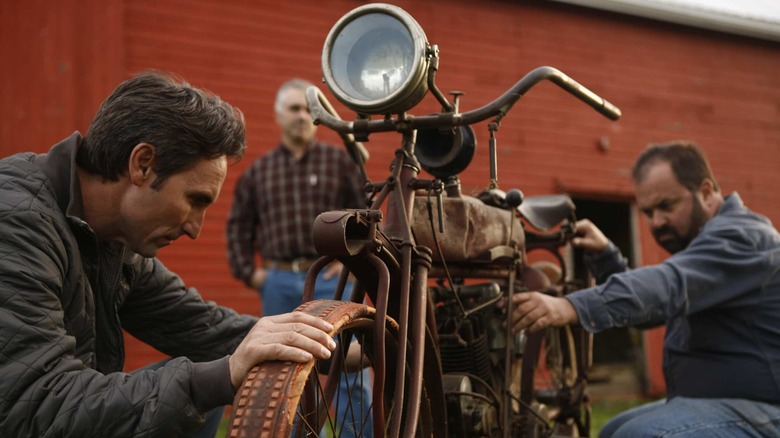How They Really Come Up With The Prices On American Pickers
For many seasons, Mike Wolfe and Frank Fritz traveled the country together on "American Pickers," looking for whatever valuable antiquities they could find. Often, something worth hundreds of dollars was just sitting in someone's garage collecting dust, but they promise to give the item a good home. It's modern-day treasure hunting, and it's been that way since the show began in 2010.
Even when other aspects of the show change, like Frank Fritz unexpectedly getting the boot, the basic premise remains the same. The hosts always know their stuff, and what's even more impressive is that they seemingly come up with a fair price right then and there. Of course, the sellers get a bit of a say in the process, but everything should be on the up-and-up, right?
Perhaps it should come as no surprise that not everything you see on reality TV is real. On "American Pickers," that comes down to the haggling process itself, and in the vast majority of cases, the final price tag heavily favors Mike and his partner.
Prices are predetermined before the cameras roll
It may feel disheartening to learn that not much about "American Pickers" is real. According to The Cinemaholic, the producers determine which items Mike and Frank will "buy" ahead of time. On the show, they always make it seem like one of the two stumbled upon some great treasure they could've easily overlooked. That's not the case; it's all staged.
Not only are the items pre-selected, but the prices are determined ahead of time, too. The producers set a price and then give both the pickers and the seller a little bit of wiggle room so that they can pretend to negotiate, even though both parties know where it's heading.
It's easy to feel disillusioned at the news, but the good part is that the antiques themselves are authentic. From the Aerosmith van to some Yoda prototypes, some intriguing things have cropped up, and luckily, the producers didn't fake any of that for the camera. Each episode's only about 22 minutes in length, and the bulk of that time is about the history of the items and explaining what they do. Cutting down on haggling time merely makes more room for education, and this show does air on History, after all. Ultimately, the items themselves are why fans tune in every episode, so it doesn't feel as bad to suspend your belief for other aspects of the show.

